The Polaris RZR 800 is an off-road powerhouse dominating the off-road scene for years. However, while it offers an impressive array of features, no vehicle is perfect and some common issues and problems come with this powerful UTV.
The most common problems with the Polaris RZR 800 include:
- Problems with the transmission and suspension spring
- Problems with brake calipers
- Problem with the Pinion nut
- The clogged air filter
- Problems with the steering
- The issue of the weak front differential
- Problems with the radius rods
In this article, I’ll look at these most common issues that can occur with the Polaris RZR 800, and how to address them. Whether you’re an experienced off-road enthusiast or a newbie, this article will help you keep your RZR 800 running smooth.
Basic Features of Polaris RZR 800:
Feature | Type |
Cylinders Displacement | 760cc High Output (H.O.) |
Transmission/Final Drive | Automatic PVT P/R/N/L/H; Shaft |
Drive System Type | On-Demand True AWD/2WD |
Engine Type | 4-Stroke Twin Cylinder |
Cooling | Liquid |
Payload Capacity | 740 lb (336 kg) |
Fuel Capacity | 7.25 gal (27.4 L) |
Ground Clearance | 10.6 in (26.9 cm) |
Fuel System/Battery | Electronic Fuel Injection |
Wheelbase | 77 in (196 cm) |
Overall Vehicle Size (L x W x H) | 103 x 50 x 69 in (261.6 x 127 x 175.2 cm) |
1. Problems with the Transmission and Suspension Spring:
Many Polaris RZR 800 owners have reported issues with transmission and suspension spring failures. These issues can cause jerky acceleration, loud noises, and gear failure. Additionally, the low ride height of the Polaris RZR 800—only 13 inches—can be a disadvantage in rougher terrain or when off-roading.
To increase the clearance of your Polaris RZR 800, you can install high-clearance radius rods. These rods will add roughly 2.5 inches of ground clearance to the vehicle, making it easier to traverse more extreme terrain.
Moreover, the stock shocks are not designed to handle the wear and tear of extreme off-roading. Therefore, every jump or pothole can cause more wear and tear on the stock shocks and even lead to a broken axle if not taken care of properly. For this reason, it is important to regularly inspect your shocks and replace them as needed.
How to Fix:
If your Polaris RZR 800 is experiencing issues with the transmission or suspension spring, it is time to take a closer look. The transmission and suspension of your Polaris RZR 800 are the main components that affect the vehicle’s performance, so it is essential to take the time to diagnose and fix any problems that may arise.
The first thing to do if you suspect an issue with the transmission and suspension of your Polaris RZR 800 is to check the fluid levels. If the fluid levels are not where they should be, then it is likely that one of the components is not functioning correctly and needs to be replaced.
Additionally, it is essential to inspect the transmission and suspension components for any signs of wear and tear. If the components are worn out, they will need to be replaced to ensure optimal performance.
Once you have checked the fluid levels and inspected the components, it is time to go on to the next step in diagnosing the issue.
This step involves checking the transmission and suspension boult, detent boult, and detent spring, which are critical in ensuring that your Polaris RZR 800 runs as smoothly as possible.
Pulling the transmission and checking the detent boult reveals whether or not it is functioning correctly, and the same goes for the detent spring.
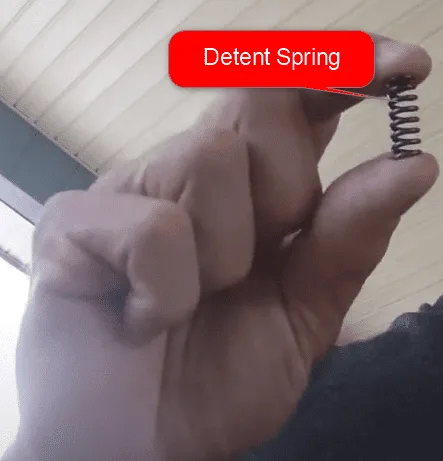
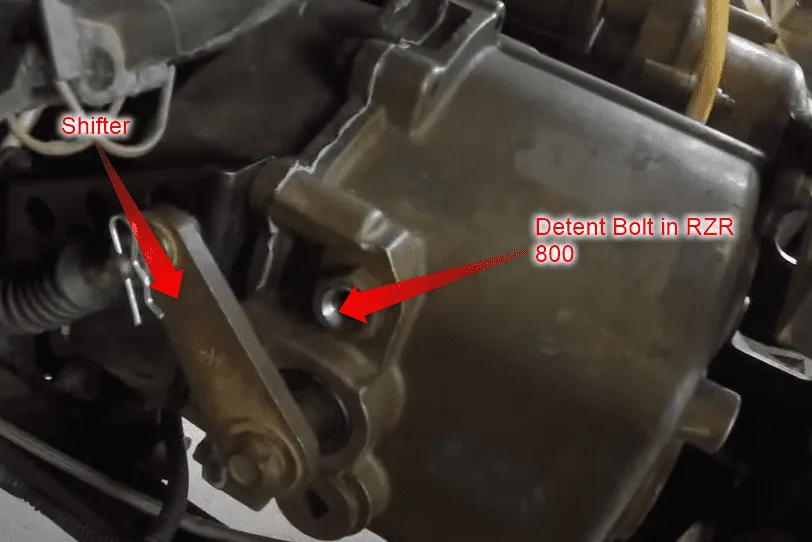
To ensure your Polaris RZR 800 always runs smoothly, it is essential to check the transmission and suspension spring regularly. Regular check-ups can help you detect and fix problems before they become too costly or dangerous.
2. Problems with the Brake Calipers:
Brake caliper issues are one of the most common problems with the Polaris RZR 800. This can cause the brake pads to compress, leading to a lower spinning wheel.
Various factors, including worn-out brakes, dry axle bearings, and over-stretching of caliper cylinders, can cause this issue. In addition, punctured tires and unbalanced wheels can also contribute to this issue.
Not only can brake caliper issues lead to the brakes stopping the wheel and halting movement, but they can also cause damage to the brake pads.
This makes it challenging to handle the wheel and increases the risk of voluntary steering. This can make it difficult to dodge obstacles, making the tires flat. This is an indication of abrasion with the brake calipers.
How to Fix:
The first step you should take is to grease the hardware. The calipers have internal components that can become overly dry and cause friction. A simple application of grease ensures that the calipers can move freely and operate correctly.
If the wheels of your Polaris RZR 800 are dragging, then it’s likely that the calipers are worn out and need to be replaced. In this case, you should seek assistance from a professional mechanic. They will be able to remove and replace the calipers, allowing you to get back on the road without any further issues.
It’s also important to note that the clutch of your Polaris RZR 800 can generate problems for the brakes. If the clutch is overly worn or damaged, it can cause friction with the brakes, resulting in poor stopping power.
Greasing the clutch and associated components can significantly reduce this frictional loss, ensuring that your vehicle stops quickly and safely.
3. Problem with the Pinion Nut:
When you own a Polaris RZR 800, one of the most common problems you will experience is the issue with the pinion nut. The pinion nut holds the rear differential and the wheels together.
Unfortunately, the pinion nut used in these vehicles is a nylon (nylock) nut, which is less reliable than a metal nut. In addition, the nylon nut can easily be dislocated due to frequent driving and off-roading.
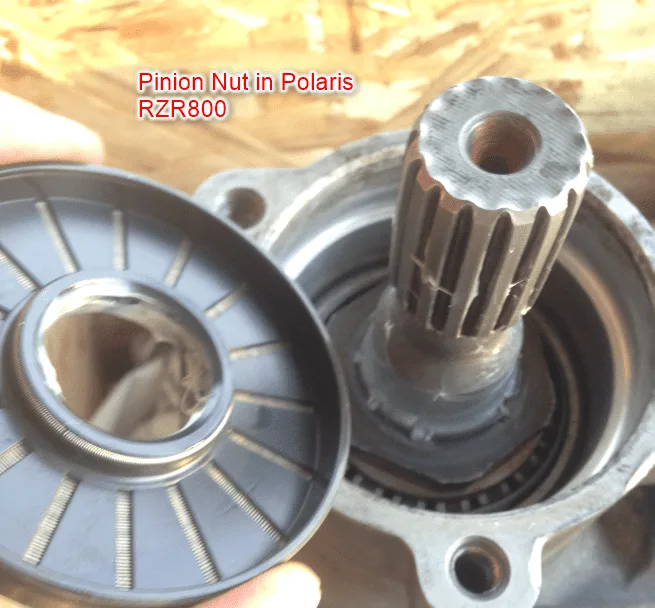
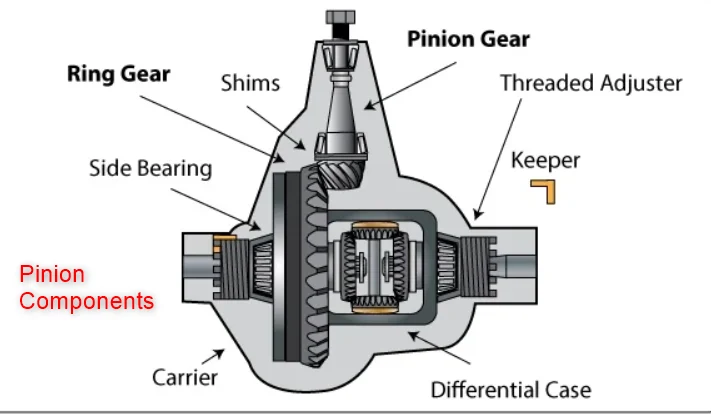
It is common for the pinion nut to come loose from the bolt after a few hundred or even a thousand miles. If this happens, you will likely be faced with a costly repair bill for your rear differential.
How to Fix:
The first step is to identify the problem. The pinion nut is often found in the rear axle, and you’ll need to look for any signs of wear or damage.
If you notice any damage to the pinion nut, it’s best to replace it with a new one. This can cost between $500-$1000.
It’s also a good idea to use metal pinion nuts rather than nylon ones, as metal ones are more reliable and are less likely to come loose.
Ultimately, the best way to prevent the pinion nut problem in your Polaris RZR 800 is to be proactive and take regular maintenance measures.
Even if you don’t have a problem with the pinion nut right now, it’s essential to check for it regularly and to replace it if necessary.
4. Clogged Air Filter of RZR 800:
One of the common problems with the Polaris RZR 800 is a clogged air filter. This problem is usually caused by changing the OEM air filter with a local one to experience better horsepower.
It lets in more air but also more dust. This issue occurs because the air filter allows more dust than it should, resulting in a clog.
The air filter of the Polaris RZR 800 is a stealthy one and is susceptible to dust clogging. The dust gets distributed unmonitored throughout the engine, which causes it to overheat and disrupt its functioning.
How to Fix:
It is advisable to clean the air filters if there is clogging in them. You can also protect the engine using a reliable engine kit. Seek professional help from a mechanic if you have no idea about fixing such issues in the vehicle.
Besides this, you can also replace the air filter through the following steps:
- STEP 1: Exclude and remove away the lid of your old filter.
- STEP 2: Eliminate the air filter of the Can-Am vehicle.
- STEP 3: Clean the air filter using soft fabric or soft brushes and do a thorough cleaning of the filter.
- STEP 4: Place the OEM air filter after replacing the old air filter.
- STEP 5: Place the new cap on the air filter.
5. Problems with the Steering:
With the Polaris RZR 800, users may experience some common issues related to the steering of the vehicle. One of the most common issues is the sudden jerking of the steering wheel to the left.
This can be caused by a low voltage, which can affect the power steering by causing it to jerk and jump in different directions.
In addition, many drivers have experienced the problem of power steering cutting out when the brake and accelerator pedals are engaged simultaneously.
These issues may seem small and insignificant, but they can significantly impact the vehicle’s functioning. Low voltage is the main culprit behind the jerking of the steering wheel and the power steering cutting out.
How to Fix:
First, make sure your vehicle is getting the correct voltage. If the voltage is too low, it can cause the power steering to malfunction. You can recharge your vehicle to resolve this steering issue and check the proper voltage. Ensure to use the pedal and gas sparingly.
It is also advised to restart the power steering and to set up an extra switch for restarting. The switch, in this case, acts as a regulator which cuts the power so that the steering can reset and stop its movement in different directions.
In addition, using a switch increases the lifespan of steering so that a user can enjoy a long run.
If still, the issue is not resolved, it is better to seek professional help.
6. The Issue of Weak Front Differential:
The weak front differential problem in the Polaris RZR 800 can cause an array of issues for the vehicle, ranging from loud rattling noises to binding up when driving in two-wheel drive mode. In addition, a lousy prop shaft, a common issue for weak differentials, can also cause it.
The issue is usually caused by the front differential being unable to transfer the power from the engine to the front wheels, resulting in the vehicle having to work harder to move forward. This is especially noticeable in 2WD mode, as the vehicle will require more power to move forward than in AWD.
Additionally, the vehicle will often produce rattling noises as the front differential struggles to transfer the power.
The major cause of the issue was the broken roll pin. It is placed in the plastic ring on top of the round spring, with the pin going down and between the two spring hooks next to the roll pin.
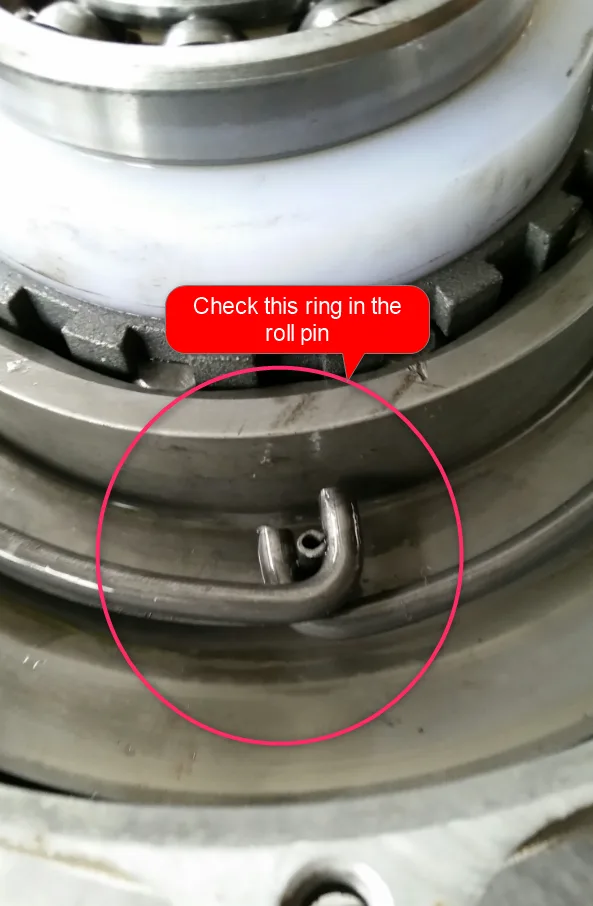
How to Fix:
A new roll pin can be purchased for around $.28 at a local hardware store.
If the issue in the Polaris is produced due to switching to 2WD mode, it can be resolved by changing back to the AWD mode. You can also seek professional help if there remains an issue with the vehicle.
7. Problems with the Radius Rods, Rod Plates and Dog-Bones in Polaris RZR 800:
Rear Radius Rods | Radius Rod Plates | Dog-Bones |
The issue of rear radius rods is common in all UTV rides, including the Polaris RRZ 800. | The radius rod plate is a sloppy component on the Polaris RZR 800. The rod plates help stabilize the radius rods on a vehicle, and issues with these plates can create inconvenience. | When the bolts are loose on the vehicle, the dog bones can damage the vehicle's frame, a common issue faced by riders. |
The radius rods have an issue bent on and off the trails, which can leave you in a standing position. Therefore, rear radius rods are the most manageable parts when replacing them | The radius rod plates add strength to the vehicle and offer rigidity to the suspension of the UTV. In addition, it provides less stress on the bolts of radius rods. | It is mandatory to fit the dog bones while replacing the radius rods and plates in your vehicle. Dog bones tightly lock up the components and provide strength to the frame. |
Pros and Cons of Polaris RZR 800:
Pros | Cons |
Polaris RZR 800 has a heavy engine that performs well. This vehicle is easy to handle even in rough terrains. | The aftermarket air filter of this UTV sucks the dust more frequently. |
This vehicle has suspension, which works well and offers a smooth driving experience to the user. | This vehicle faces the issue of the rear differential pinion nut, and its power steering jumps and stops working. |
This vehicle has an ergonomic design. | The transmission of this vehicle pops out of gear in reverse order. |
This vehicle has a big storage capacity. | The brake calipers of this vehicle suddenly stop working. |
Polaris RZR 800 Customer Review/Feedback:
The Polaris RZR 800 is a powerhouse of a UTV that has been designed with extreme off-road adventures in mind. Although it does have some potential drawbacks, the feedback from users is overwhelmingly positive.
Let’s take a look at what some users have to say about the Polaris RZR 800:


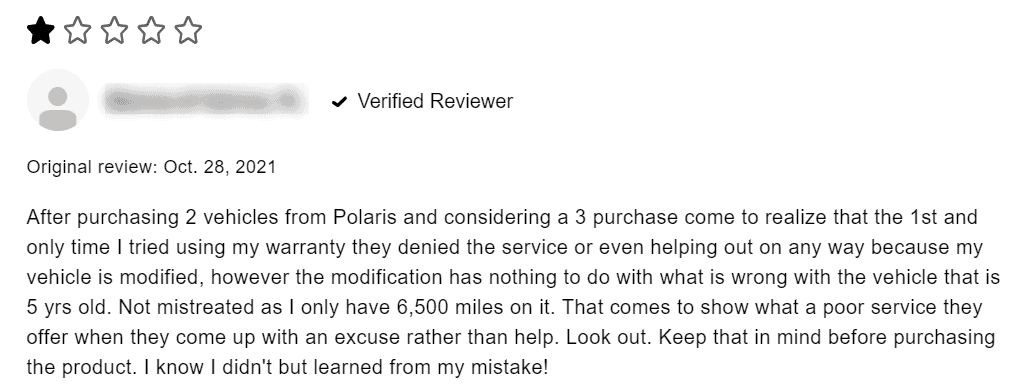

Overall, despite the potential drawbacks of the Polaris RZR 800, most users are pleased with their purchase.
If you’re looking for a powerful, reliable UTV that can handle extreme off-road activities, the Polaris RZR 800 is an excellent choice. With its power and performance, it is sure to provide you with an unforgettable experience.
Final Thought:
The Polaris RZR 800 UTV is an excellent choice for off-road enthusiasts looking for a robust and reliable vehicle. Despite its high performance, there are some common problems you should be aware of before buying.
However, if you maintain the UTV properly, you can enjoy your Polaris RZR 800 for years.
Also Read:
8 Common Yamaha Rhino 660 Problems- How to Fix Them
7 Common Coleman 550 UTV Problems- How to Fix
9 Most Common Massimo UTV Problems & How to Fix Them
Top 7 Honda Pioneer 1000 Problems and Fixes
Kawasaki Mule Pro FXT: How to Fix the Most Common Problems
7 Common Problems with Honda Rancher 420- How to Fix
10 Most Common Problems with Polaris Ranger 700 XP(With Fix)
Why Are 3-Wheeler ATVs Illegal? What You Need to Know
Frequently Asked Questions (FAQs):
Is the Polaris RZR 800 a reliable vehicle?
Polaris RZR 800 is a reliable vehicle with a good engine that performs well. This vehicle runs smoothly with 20mpg of fuel. This vehicle is considered a multiple options to run down on trails and works for a long time.
What is the worth of Polaris 800?
The cost of the Polaris 800 is between $6500. It has some standard specs for the engine, including the 2-cylinders with 4-stroke and 760cc features.
How fast does a Polaris RZR 800 work?
The Polaris RZR 800 has some factory-based limitations, so it works on an average top speed of 85 MPH. The ECU of the vehicle achieves this speed.
Up to how many miles the engine of the Polaris RZR 800 can last?
The engine of the Polaris RZR 800 can work for 300 hours and 3000 miles maximum. If this vehicle is adequately maintained, it can last for more hours with proper replacement of components.
Is there a good motor in Polaris 800?
Polaris RZR 800 is considered a powerhouse of an engine. It has a reliable engine with low emissions and works well in snow terrains.
Which is the lowest mileage recorded on RZR 800?
The lowest mileage recorded on RZR 800 is 1000 miles.
What is the average horsepower in RZR 800?
The average horsepower in RZR 800 is 52 hp. It has a displacement value of 760 with a width of 50 and a wheelbase of 77.
Is it worth buying Polaris RZR 800?
Of course, it is worth buying Polaris RZR 800 as it is a vehicle that can be taken on the most challenging terrains, including dunes, mountains, and in between rocky terrains too.
How much is the horsepower in the RZR 800 vehicle?
The total horsepower in the RZR 800 is around 52 hp. It has a displacement value of 760, a wheelbase of 77, and a width of 50.
Which RZR vehicle is considered the best option to purchase?
The best option for buying the RZR vehicle is Polaris RZR 170. It holds a unique design and is fuel-injected.
Is it possible to put a turbo kit on Polaris RZR 800?
It is possible to put a turbo kit on Polaris RZR 800. There is 40% more torque and horsepower in the vehicle. It requires about 5-6 hours at maximum to install the turbo kit.
Is the RZR 800 vehicle works faster in general than other vehicles?
The Polaris RZR 800 has a twin-cylinder with a large EFI system and horsepower. In addition, there is a smooth transmission of this vehicle, and it offers perfect traction to the user.
Which model of RZR is considered the best one regarding horsepower?
The RZR Pro R vehicle in the Polaris range is regarded as a model that has a powerful engine. It has a 2.0L and four-cylinder motor that provides 225 hp and performs excellently.

This is Surya. I am an experienced off-roader. I have been off-roading for many years across several terrains. I am passionate about 4×4 driving and want to share my knowledge and experience with others.
My goal is to provide you with the most comprehensive and unbiased information about off-roading.
I curated this article through my personal experience and expertise, and I hope it helps you with what you are looking for.

 (+91)9123743026
(+91)9123743026
 24/1 Nibedita Sarani. M.B. Road, Kolkata- 700051, India
24/1 Nibedita Sarani. M.B. Road, Kolkata- 700051, India